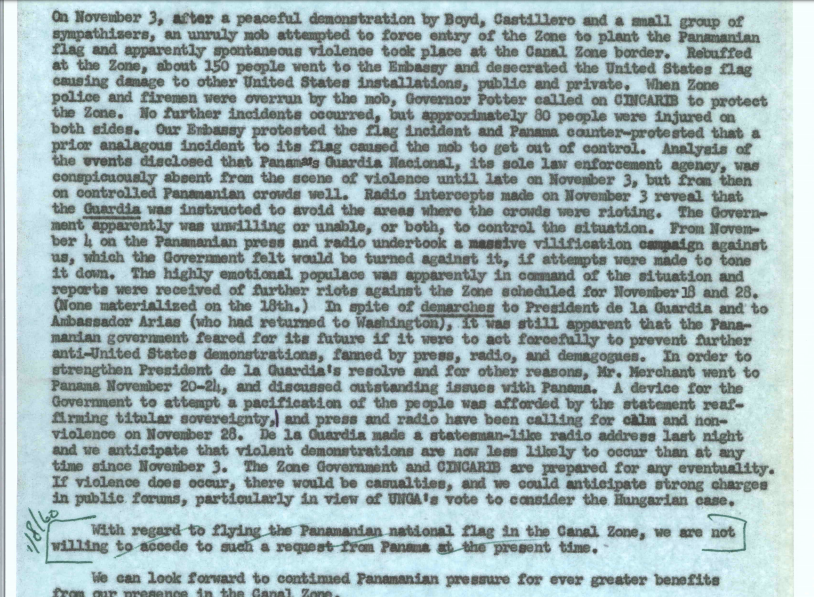As the Cold War (1945-1991) between the communist U.S.S.R. and the capitalist U.S.A. developed, many Latin American nations went through periods of social revolution (1945-1960). Many of these social revolutions became apparent due to the extraneous foreign policy enactments of the United States. The cold war, along with decades of exposure to communist and Marxist ideologies, brought about an era of question social issues in more depth, the later would be a series of social revolutions in many Latin American countries.
Panama witnessed a more precarious situation with its proposed “sovereignty.” Panama had not been direct as a spoil of war like that of Cuba or Puerto Rico after the Spanish-American War. However, Panama had faced a completely different situation but had still resulted in being a de facto protectorate of the United States. The Canal Zone was a 553 square mile territory of Panama that was directly owned by the United States. The sheer symbolism of one’s country being separated in halves by the greatest superpower in the hemisphere is already astronomical and, as Latin American nations were challenging U.S. hegemony in the region, many Panamanians grew ever more resentful to the U.S. for the disgraceful practices occurring in the Canal Zone, U.S. controlled zone markets denied Panamanian access and sold third party goods and services. Likewise, the Canal Zone was becoming a constant reminder of Panama’s indignity earlier in the century.
The U.S. was in no situation to hamper relations with Panama, in fear of loosening more of their Latin American foothold while actively battling the ‘Red Menace” of the Soviet Bloc. Likewise, the Panama Canal was a feature of American pride as one of the greatest engineering feats of the modern era and the U.S. would prove stubborn toward any concessions of their prize. However, Panamanians had concluded that the agreements of the Canal treaties at the beginning of the century were not fair and pressured government officials to take action. U.S. officials soon realized that negotiations would need to take place and concessions would need to be made.
The mid-late 1950s would be the true beginning of these discussions. The Remon-Eisenhower Treaty (1955) sought to mediate much of the tension and issues of the U.S. and Panamanian negotiations. However, this treaty had little effect and many protestors stage demonstrations. On November 3, 1959, a group of Panamanians held a peaceful demonstration near the Canal Zone. Presumably, the group had been protesting all the major issues but the symbolic issue of the U.S. flag solely flying over the Canal Zone was of big importance. According to U.S. documents that we declassified in 2016, the group of protestors forced their entry into the U.S. embassy to plant the Panamanian flag and in doing so, desecrated the U.S. flag and caused major damage. The event resulted in 80 injuries, confirmed for both sides, and is a clear instance of the tensions boiling over. No other major incidents occurred after the 1959 embassy riot, but the U.S. had continued to provide minimal concessions to the negotiations, especially concessions involving the flag. The negotiations would continue, well off into the 1970s, when President Jimmy Carter finally conceded canal operations to the country of Panama.


Works Cited:
“The Panama Canal: Riots, Treaties, Elections, and a Little Military Madness, 1959-1973.” National Archives and Records Administration. National Archives and Records Administration. Accessed April 12, 2020. https://www.archives.gov/research/foreign-policy/panama-canal.
By Peyton O’Laughlin
